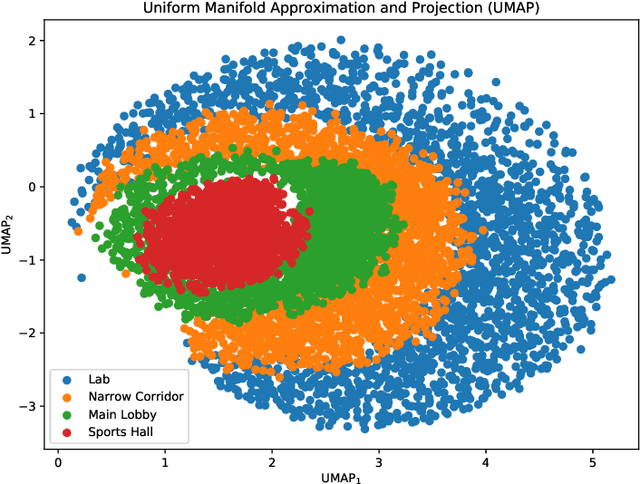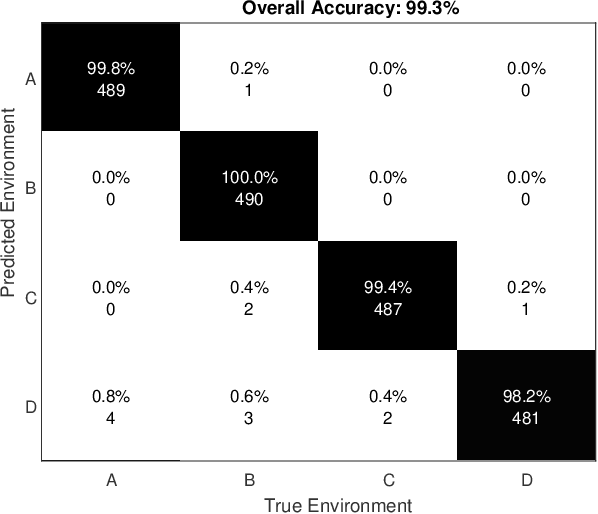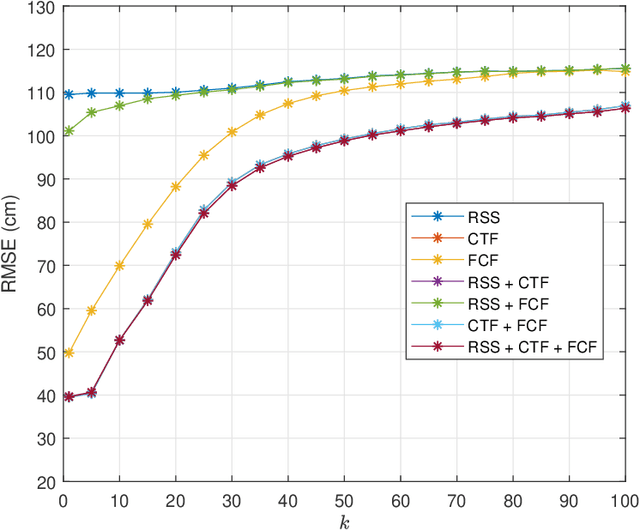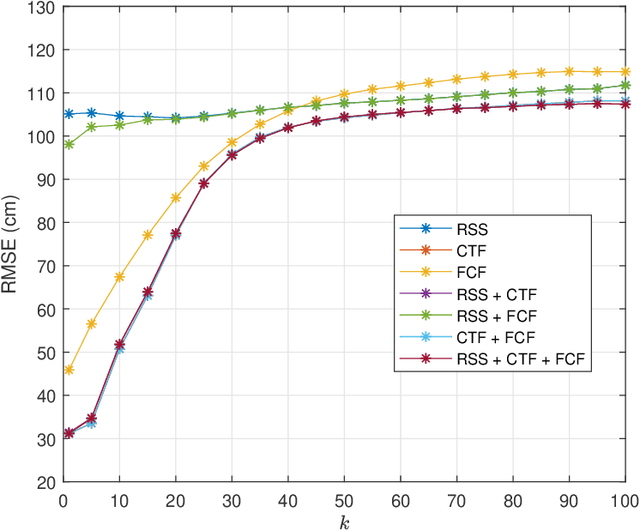Nazar T. Ali
Indoor Localization for IoT Using Adaptive Feature Selection: A Cascaded Machine Learning Approach
May 03, 2019



Abstract:Evolving Internet-of-Things (IoT) applications often require the use of sensor-based indoor tracking and positioning, for which the performance is significantly improved by identifying the type of the surrounding indoor environment. This identification is of high importance since it leads to higher localization accuracy. This paper presents a novel method based on a cascaded two-stage machine learning approach for highly-accurate and robust localization in indoor environments using adaptive selection and combination of RF features. In the proposed method, machine learning is first used to identify the type of the surrounding indoor environment. Then, in the second stage, machine learning is employed to identify the most appropriate selection and combination of RF features that yield the highest localization accuracy. Analysis is based on k-Nearest Neighbor (k-NN) machine learning algorithm applied on a real dataset generated from practical measurements of the RF signal in realistic indoor environments. Received Signal Strength, Channel Transfer Function, and Frequency Coherence Function are the primary RF features being explored and combined. Numerical investigations demonstrate that prediction based on the concatenation of primary RF features enhanced significantly as the localization accuracy improved by at least 50% to more than 70%.
 Add to Chrome
Add to Chrome Add to Firefox
Add to Firefox Add to Edge
Add to Edge